April 16, 2025 | 15:41 GMT +7
April 16, 2025 | 15:41 GMT +7
Hotline: 0913.378.918
April 16, 2025 | 15:41 GMT +7
Hotline: 0913.378.918
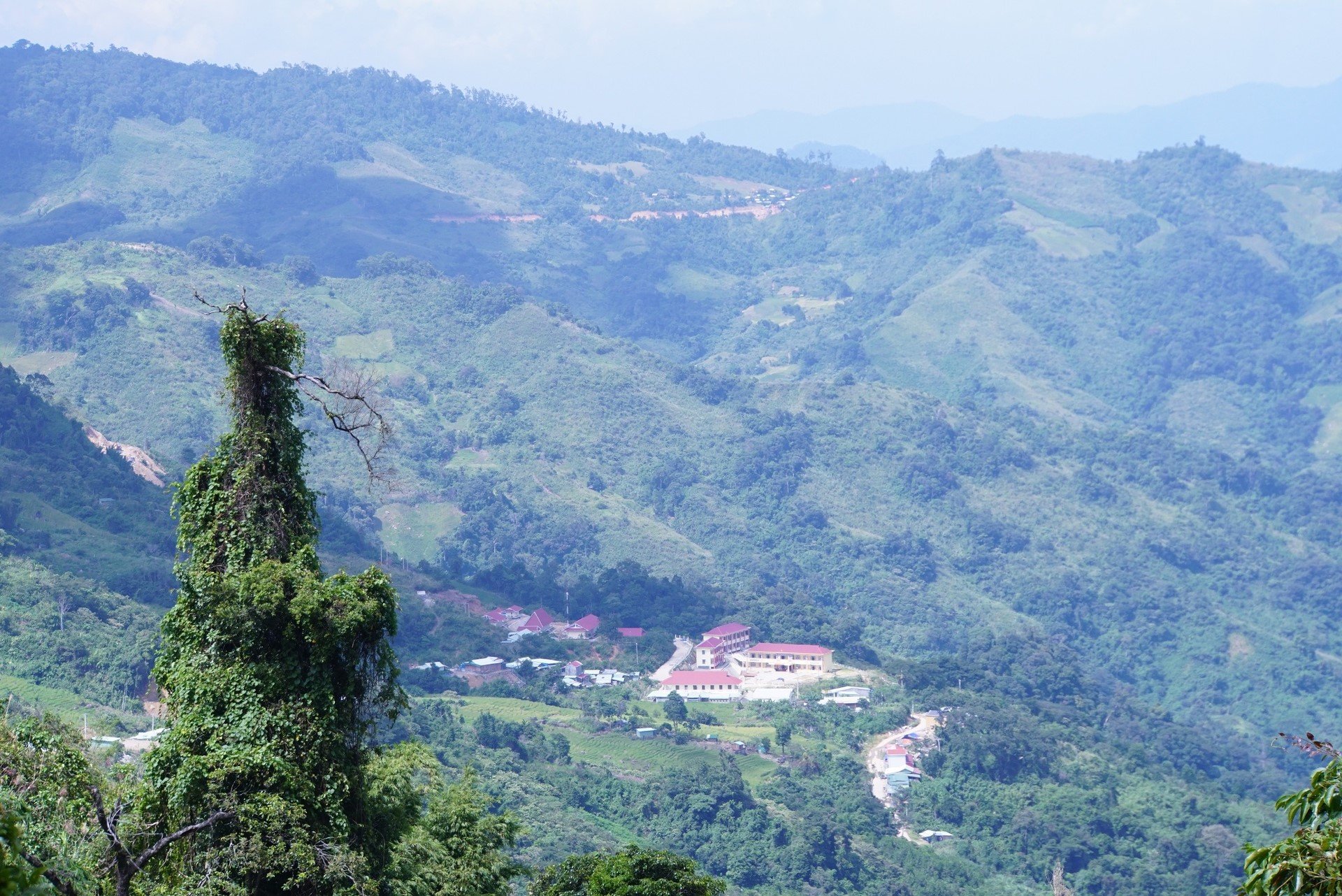
Nam Tra My district has favorable natural conditions for developing medicinal plant species. Photo: L.K.
According to the National Institute of Medicinal Materials (Ministry of Health), Vietnam has very diverse and rich biological resources, ranking 16th out of 25 countries with the highest level of biodiversity in the world. Vietnam has more than 5,000 species of precious medicinal plants with not only medicinal value but also high economic value.
Along with some other areas nationwide, Nam Tra My district (Quang Nam) is a locality with natural conditions and terrain suitable for many medicinal plant species such as Paris polyphylla Smith, anoectochilus, codonopsis pilosula, jiaogulan, schisandra chinensis, cinnamon, stemonaceae, etc., and especially Ngoc Linh ginseng.
According to statistics from the Nam Tra My Department of Agriculture and Rural Development, the district has 2,000 ha of medicinal plants. In the work of producing seeds, the whole district has two organizations, namely Tra Linh Medicinal Herbs Station of Quang Nam Centre on Developing Ngoc Linh Ginseng and Medicinal Herbs and Nam Tra My Agricultural Technical Center, which have been producing and providing medicinal seedlings with an average capacity of 2.5–3 million seedlings/year. Of which Ngoc Linh ginseng, cinnamon, and Codonopsis javanica seedlings are mainly concentrated in production.
With the economic value brought by medicinal plants, the number of households participating in growing medicinal plants under the forest canopy, mainly ethnic minorities, is increasing every year. Accordingly, the demand for seed production is increasing. However, with the limited number of seed suppliers in the area, it is not possible to equalize supply and demand.
In addition, the source of original seeds for propagation is currently not controlled, so the quality of medicinal seedlings is not guaranteed. Most of the medicinal seedlings only serve the needs of farmers in the province for growing medicinal herbs and are not enough to supply other provinces, although the current demand is very large.
According to Mr. Trinh Minh Hai, Head of Nam Tra My Agriculture and Rural Development Department, besides the above-mentioned limitations, the current research and application of science and technology in the cultivation, production, and processing of medicinal seedlings, post-harvest processing, and conservation and development of genetic resources of medicinal plants in the area have not received adequate attention and investment.
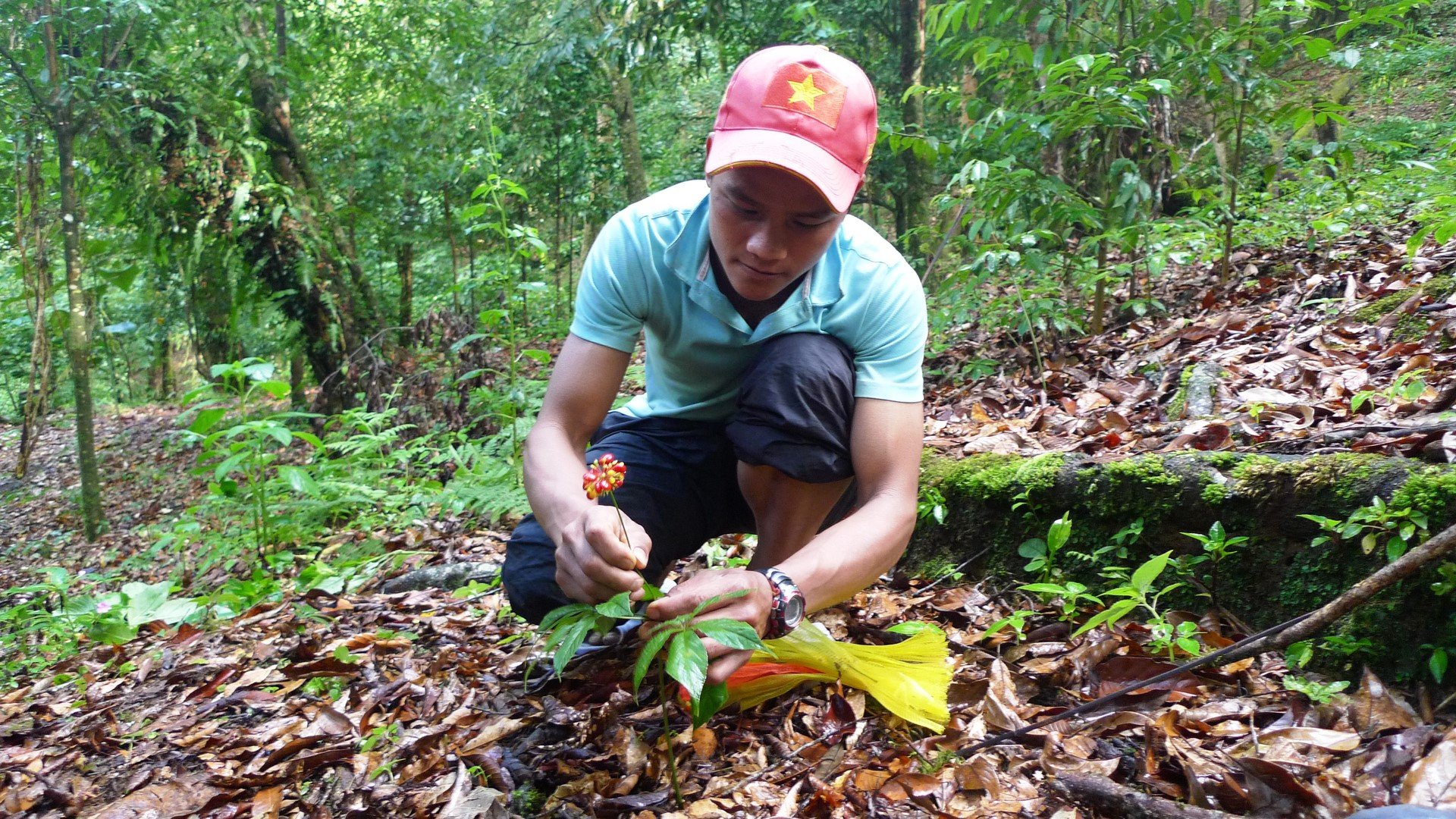
The Ngoc Linh ginseng tree is a plant of high economic value and is grown a lot in Nam Tra My district. Photo: L.K.
"The economic efficiency of revenue from medicinal herbs is not commensurate with the potential, not meeting the local supply of medicinal herbs. At the same time, due to the commercial purposes and high value of medicinal plants, the rampant harvest and exploitation of medicinal plants caused natural medicinal plant species to be exhausted and face extinction.
The cultivation and processing of medicinal herbs is mainly small-scale and spontaneous, with their value almost dependent on the Chinese market. Besides, the district also lacks enterprises investing in the value chain of production and consumption of medicinal products, so the economic efficiency has not yet been high," said Mr. Trinh Minh Hai.
According to a representative from the National Institute of Medicinal Materials (NIMM), currently, the development of medicinal plants in Nam Tra My district is not really commensurate with the potential, especially in the application of science and technology in production. Meanwhile, many localities nationwide have well implemented this issue, which has brought high efficiency and is increasingly being replicated.
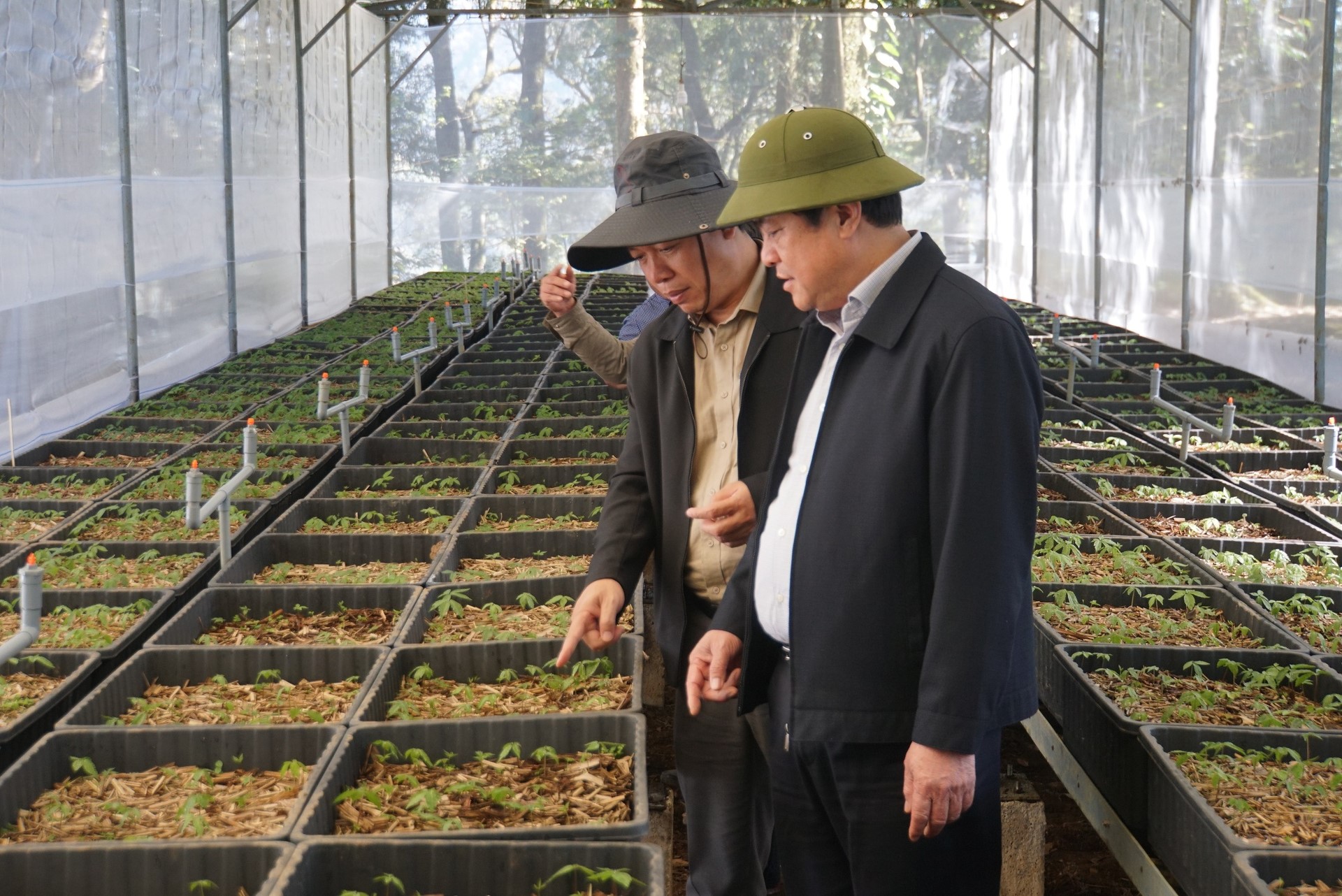
Currently, the supply of medicinal seedlings in quantity and quality has not met the demand. Photo: L.K.
Advances in science and technology have greatly contributed to the conservation and development of medicinal resources as well as economic development for growers. There have been many achievements from the application of high technology in research to create propagation processes aiming to preserve and develop domestic medicinal plants as well as import varieties.
From the above comparison, Dr. Phan Thuy Hien, Deputy Director of NIMM, said that it is necessary to build a center for propagation, conservation, and development of high-tech medicinal herbs in Nam Tra My district. This center’s formation will solve the above problems as well as provide a source of stable-quality seeds for Nam Tra My in particular and the South Central Coast in general.
"It is expected that the average operating capacity of the center for propagation, conservation, and development of high-tech medicinal herbs in Nam Tra My district will provide over 100 million seedlings/year. This is also the place to create a source of medicinal seedlings in sufficient quantity and quality to supply the market; promote the development of medicinal plant material areas, helping to reduce the pressure of natural exploitation that depletes the locality’s medicinal resources," said Dr. Phan Thuy Hien.
On the basis of the locality’s orientation, assessments of soil, irrigation water, and site conditions that are not located in natural forests and are convenient for travel, NIMM chooses two locations in Tra Linh and Tra Nam communes to build a center for propagation, conservation, and development of high-tech medicinal herbs. It is expected that the total planned construction area of this center will be about 53.8 ha.
In which, about 3.5ha are for building the operator house, high-tech net house, and original seed garden for medicinal herbs suitable for low mountains in Tra Nam. About 50 ha are for building an original seed garden for medicinal herbs suitable for an altitude of more than 1,000m in Tra Linh. When put into operation, the center will prioritize the development of 19 species of high-value medicinal herbs and 15 potential species.
Mr. Le Thanh Hung, Secretary of Nam Tra My District Party Committee, said that the construction of a large-scale medicinal orchard with the application of high science and technology in the area not only provides quality seeds for the whole district and other localities but also can gradually replace short-term crops that are not valuable in bare hills or burnt-over lands. "Nam Tra My always wishes for people to live in the forest, protect the forest, and really benefit from the forest. However, in this project, it is necessary to carefully study solutions on policy, capital, and infrastructure, especially legal documents, to avoid problems with procedures and legality related to production on forest land. In addition, the operating model for this center also needs to be resolved in the direction of calling for businesses to jointly invest," said Mr. Hung.
Translated by Huyen Vu Thu
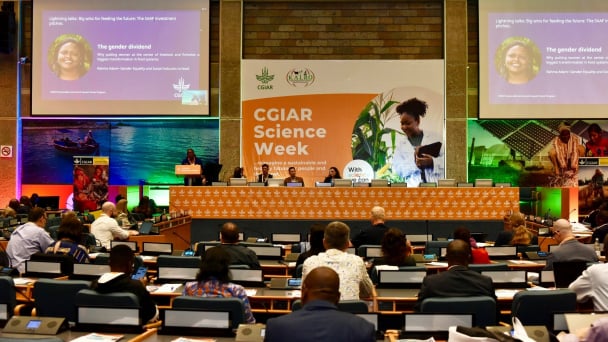
(VAN) The CGIAR’s Sustainable Animal and Aquatic Foods (SAAF) program represents a new approach that emphasizes the transformation of food systems toward sustainability.
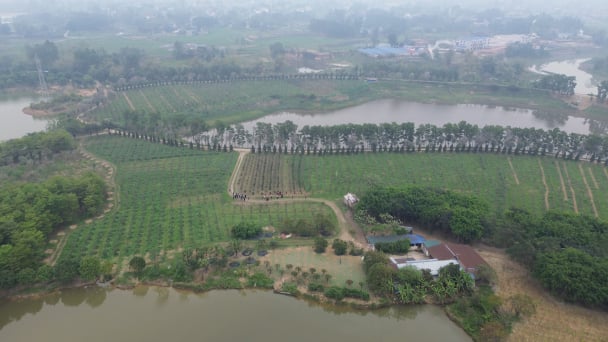
(VAN) Scientists assume that industrial agriculture has been 'outdated.' As a result, a comprehensive overhaul or a revolution in the direction of embracing ecological agriculture is needed.
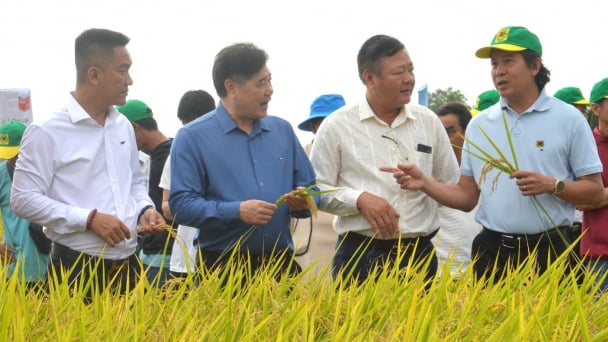
(VAN) The results from pilot fields are catalyzing the expansion of the One million hectares of high-quality, low-emission rice project in Kien Giang.
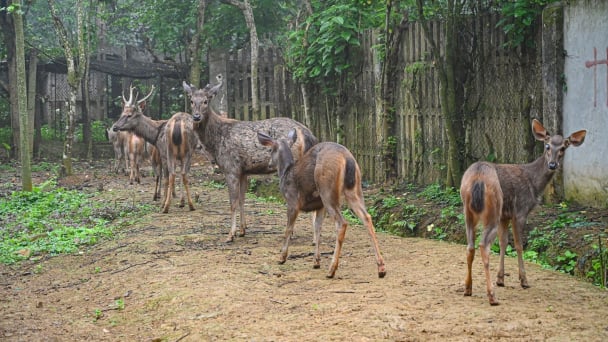
(VAN) On the morning of April 11, Cuc Phuong National Park received 18 individuals of endangered and rare wild animals from Da Nang city.

(VAN) FAO supports Vietnam in enhancing survey sampling techniques for the 2025 nationwide agricultural and rural census.
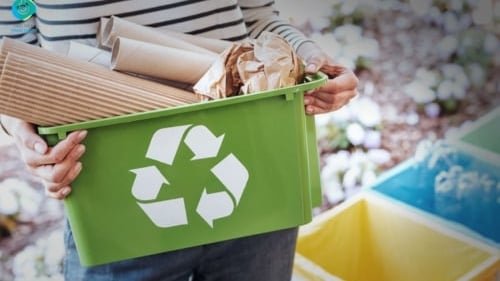
(VAN) By participating in the green transition, manufacturers become an indispensable part of the circular economy, contributing to resource optimization and environmental protection.

(VAN) The One Million Hectares of High-Quality and Low-Emission Rice Program can generate nearly 14 million tons of straw annually, posing an urgent requirement to diversify straw-based products.